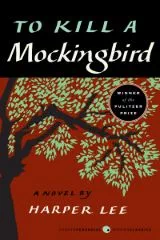Veronika Decides to Die by...
As bleak and uninviting as the title looks, t...
By Ethan Griffin2062

0

To Kill a Mockingbird is a coming-of-age story that was published in 1960 by Harper Lee. Why this book has been so successful and matters so much to the audience is because of its reverence and the subtle portrayal of emotional juxtaposition that is minced within the story.
From innocence to kindness and humor to hatred, every page announces a varied emotion that is valid and appealing. The first few pages might make you wonder about its popularity and make you question its international fame. But as you read further, you can find yourself completely engrossed in the tale and any turn of events.
The novel is portrayed through the perspective of a six-year-old girl, Scout Finch whose father is Atticus Finch. The character of Atticus Finch is portrayed as an honest lawyer who fights for a black man with a false accusation of raping a white girl.
The story is set in a fictional town called Maycomb that is located in Alabama and talks about the religious and ethical morals of America in the 1930s, which was also the time of the Great Depression.
The first half of the book narrates the daily squabbles and encounters that Scout has with his older brother, Jem and her father in the town. The kids are taken care of by their Negro housekeeper.
The 1930s witnessed heightened prejudices related to race and class. And since Atticus defends a black man, they notice strange behavior from the entire town. He, however, sets a great example for his kids.
To Kill a Mockingbird is undoubtedly a masterpiece that is critically acclaimed and therefore sits among the top ranks of almost every bibliophile. It not only won the Pulitzer Prize in 1961 but was also converted into a film that later won the Academy Award. The beauty of this book is that every reader snatches a different meaning, which varies at a higher degree.
Updated 4 years ago